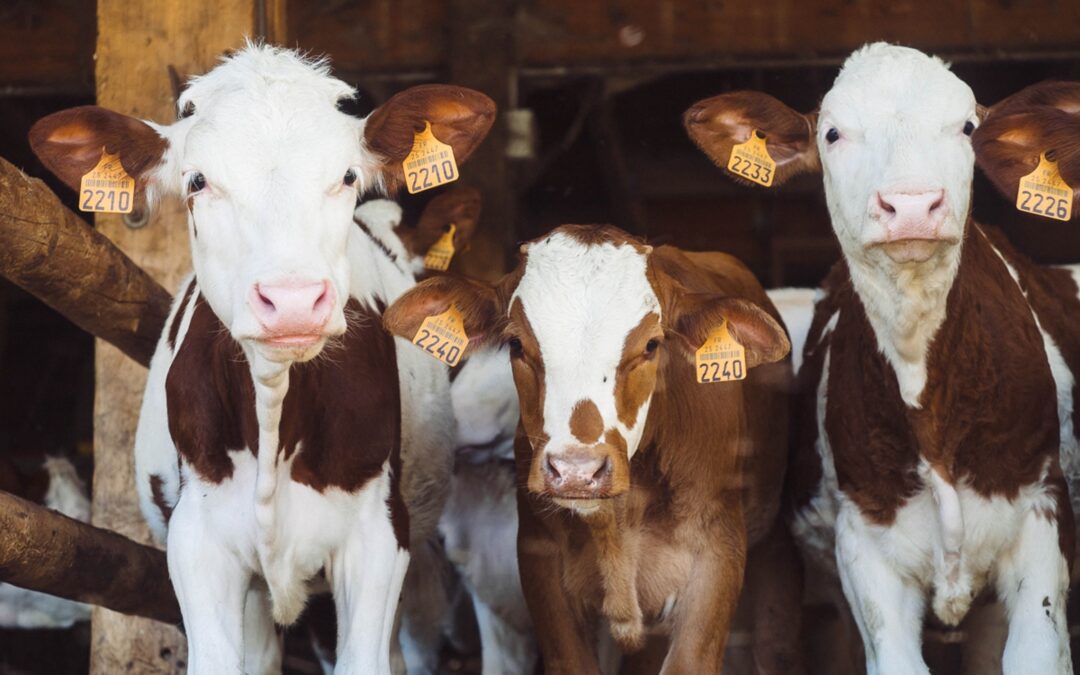Pasto o grano
La forma de alimentar a una vaca puede afectar al valor nutricional de su carne, además de los efectos sobre el medio ambiente. La mayor parte del ganado actual se alimenta con cereales, lo que va en contra de las leyes de la naturaleza y de la evolución, ya que el ser humano solía consumir carne de vacas y animales que andaban sueltos. Siempre ha habido controversia en torno a si realmente hay algún beneficio para la salud por consumir carne de vacuno sin pastos, y si ser vegano realmente solucionaría las emisiones de las granjas.
Las vacas suelen nacer y primero toman leche de sus madres. Cuando crecen, empiezan a vagar y a comer hierba y otras plantas de su entorno. Después de 7-9 meses, se trasladan a los cebaderos, donde tienen un espacio limitado, y se confinan en pequeños establos individuales. Allí se les engorda con piensos a base de grano que provienen de un tipo de soja o maíz. En esta fase también se les suministran medicamentos, como hormonas y antibióticos. Viven aquí durante meses antes de ser trasladados a los mataderos. Hablemos de algunos beneficios:
- La carne de vaca alimentada con hierba contiene mucha menos grasa monoinsaturada que la alimentada con cereales
- La carne de vaca alimentada con hierba también contiene 5 veces más Omega 3 que la alimentada con grano
- La carne de vaca alimentada con hierba contiene proteínas de mayor calidad y algunos otros nutrientes como la creatina o la carnosina, ambos importantes para los músculos y el cerebro.
- Y tiene más vitamina E y A
La carne de vacuno alimentada con hierba puede ser más cara, pero si hablamos de nutrición, sabor y textura, la carne de vacuno alimentada con hierba vale su dinero. Comer alimentos reales es siempre lo mejor, y si su comida real, come alimentos reales, todos obtendrán los nutrientes que necesitan para satisfacer sus necesidades. Como siempre, la elección es tuya, y hay muchas razones por las que la gente querría comprar alimentos alimentados con cereales.
Grass-fed vs Grain-fed
The way a cow is fed, can affect the nutritional value of its meat, along with the effects on the environment. Most of the cattle to this day are grain-fed, which goes against the laws of nature and evolution where humans used to consume meat from cows and animals that roamed around. There’s always been controversy around if there’s actually any health benefits from eating range-free beef, and if going vegan would actually solve farmhouse emissions.
Cows are usually born, and they first drink milk from heir mothers. As they grow older, they start roaming around and eating grass and other plants ir their environment. After 7-9 moths, they are transferred to feedlots, where they have limited space, and are confined to tiny individual stalls. There, they are fattened with grain-based feeds that come from a type of soy or corn. Drugs, such as hormones and antibiotics are also fed to the animals in this stage. They live here for moths before being transferred to slaughterhouses. Let’s talk about some benefits:
- Grass-fed beef contains way less monounsaturated fat than grain-fed
- Grass-fed also contains 5 times as much Omega 3 than grain-fed
- Grass-fed contains higher quality protein and some other nutrients like creatine or carnosine, both important for your muscles and brain.
- And it has more vitamin E & A
Grass-fed beef can be more expensive, but if we talk about nutrition, taste, and texture, grass-fed is worth your money. Eating real food is always best, and if your real food, eats real food, everyone will get the nutrients they need to meet their needs. As always, the choice is yours, and there are many reason people would like to buy grain-fed.

